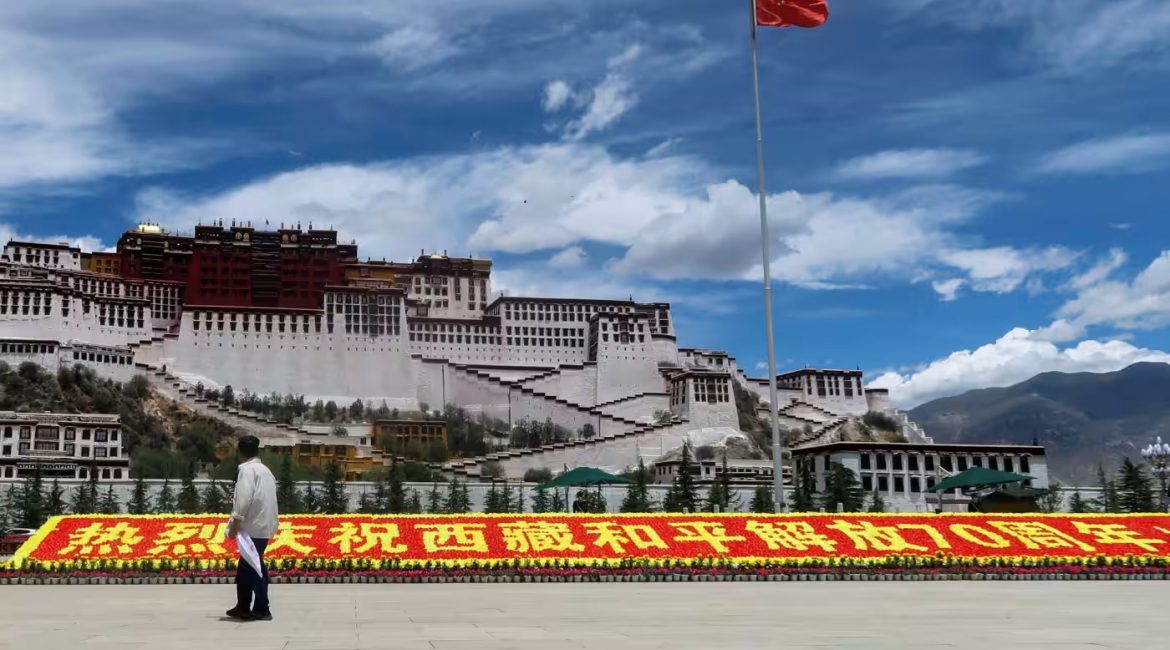Having recently returned from a pilgrimage to various 17th century-era Karma Kagyu monasteries in Yunnan, China as well as the “Little Potala” established by the 5th Dalai Lama, I noticed a distinct difference in the institutions and their activities. The Little Potala was like a Buddhist Disneyland, with high entrance fees and busloads of non-Tibetan tourists taking self-portrait photos dressed in Tibetan traditional costume, with no photos of the Dalai Lama or monks anywhere to be seen. The Karma Kagyu monasteries, on the other hand, were quiet, peaceful places with monastic rituals and retreat centres and photos of the 17th Karmapa, 12th Tai Situpa, and 12th Gyaltsab Rinpoche displayed prominently.
The violent and oppressive rise of the Gelugpa and Dalai Lama’s absolute power in Tibet
The karmic reasons for this difference in the Yunnan temples seem rather obvious. As I wrote about on last year’s Tibetan Democracy Day, the Gelugpa (and their followers) consider the 14th Dalai Lama and themselves by proxy (as does the US government) the righteous rulers and saviours of Tibetan freedom and self-determination. Yet for anyone who has investigated the history of the Dalai Lamas and Gelugpas in Tibet and Ladakh, beyond the Gelugpa biased narratives, there have been considerable karmic consequences for the extensive violence and destruction that the Gelugpas committed against their own Tibetan Buddhist masters, heritage, and people.
The Gelug political and religious domination in Tibet did not happen gradually by peaceful means. It was violently built in the 17th century on the back of a Mongolian military invasion led by Güshi Khan from 1641–2, which the Gelugpas instigated and supported. Like most conquests, this was followed by mass murder and theft: for example, as the 17th Karmapa recently explained, the Karma Kagyu shedras in central Tibet were all destroyed, and 10th Karmapa had to flee for his life to the Jang region (Yunnan). The other Kagyu, Nyingma, and Jonang lineages also similarly suffered.
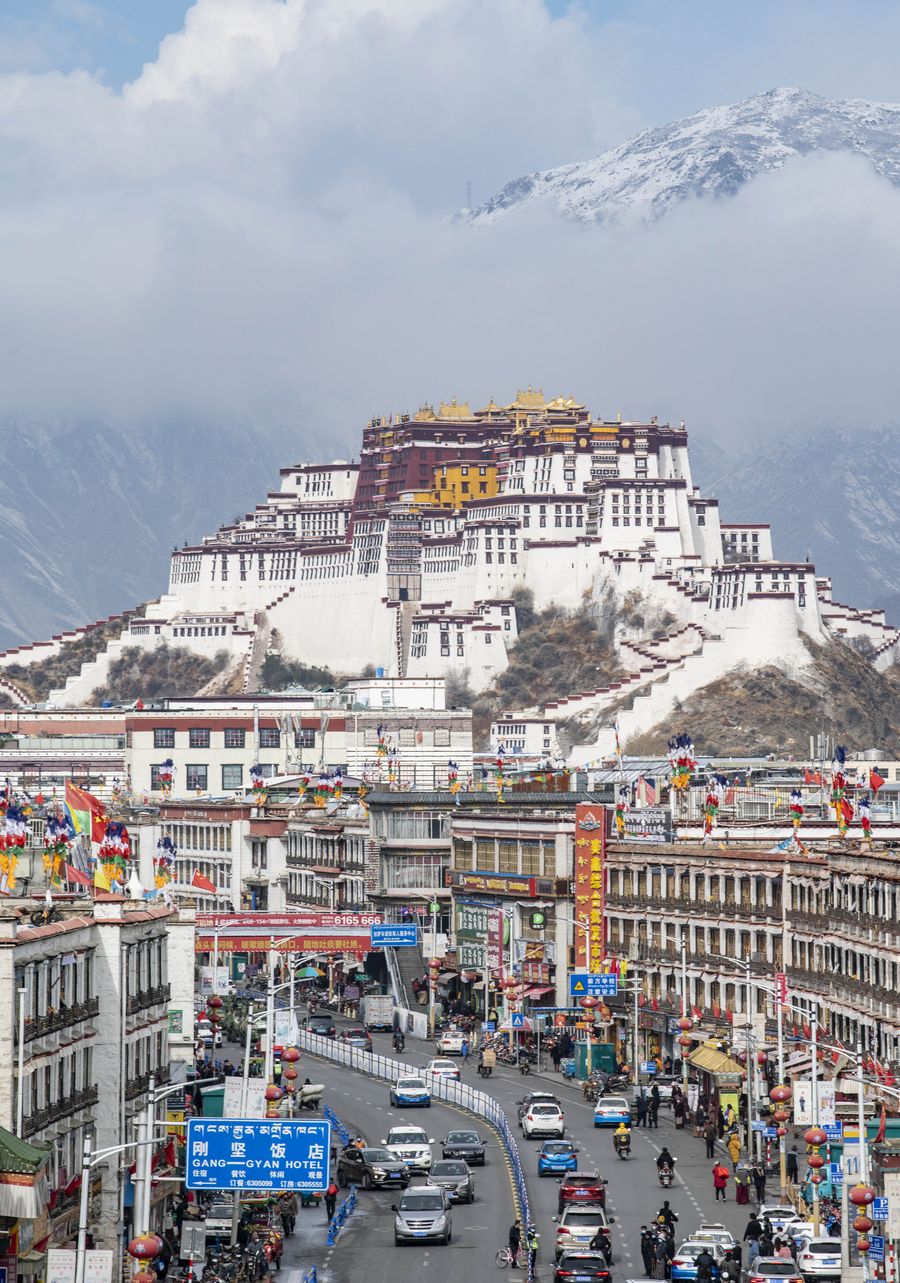
Over the last few decades, there has been a conscious project to conflate “Tibetan Buddhism” and the future of Tibet with not only the person of the Dalai Lama, but also the Gelug institutions. To be clear, I do not support or condone any oppression or state violence against civilians and their religious culture. But the historical fact is that the 5th Dalai Lama and the Gelugpas set the ball in motion for the Mongolians, and later on, the Qing dynasty, to suppress, censor and even destroy other main Tibetan Buddhist lineages and their institutions within Tibet, long before 1959.
Similarly, it was the actions of the 5th Dalai Lama and Gelugpas in Ladakh towards the Drugpa Kagyu lamas of the kings of Ladakh there, that led to their being forced to seek exile from their aggression and found the Buddhist kingdom of Bhutan. There is no presence of the Dalai Lama-Gelugpas in Bhutan to this day.
After studying and living in the Tibetan exile community in Dharamsala for many years within Gelugpa biased institutions like the Library of Tibetan Works and Archives, I initially had a “romantic/orientalist” idea (like most) about the Dalai Lama and Tibet. However, as time went by the actual reality about them and their strategy in exile too became clearer. Since 2021, I have been one of the few international voices publicly discussing the prevailing, and harmful, Gelugpa sectarianism and domination, with the Dalai Lama institution at the forefront. Most Tibetans there (with a minority of socially isolated dissenters) seem to accept – either being indoctrinated or fearful of social isolation – that he is still their leader and superior to all the other main lineages.
Yet, the reality is that Tibetan Buddhist lineages and teachings (and Tibet itself) are far older and vaster than the Dalai Lama or Gelugpas, and they are not equivalent to Tibet or Tibetan Buddhism.
The “Universal and World Leader of Buddhism.” Says who?
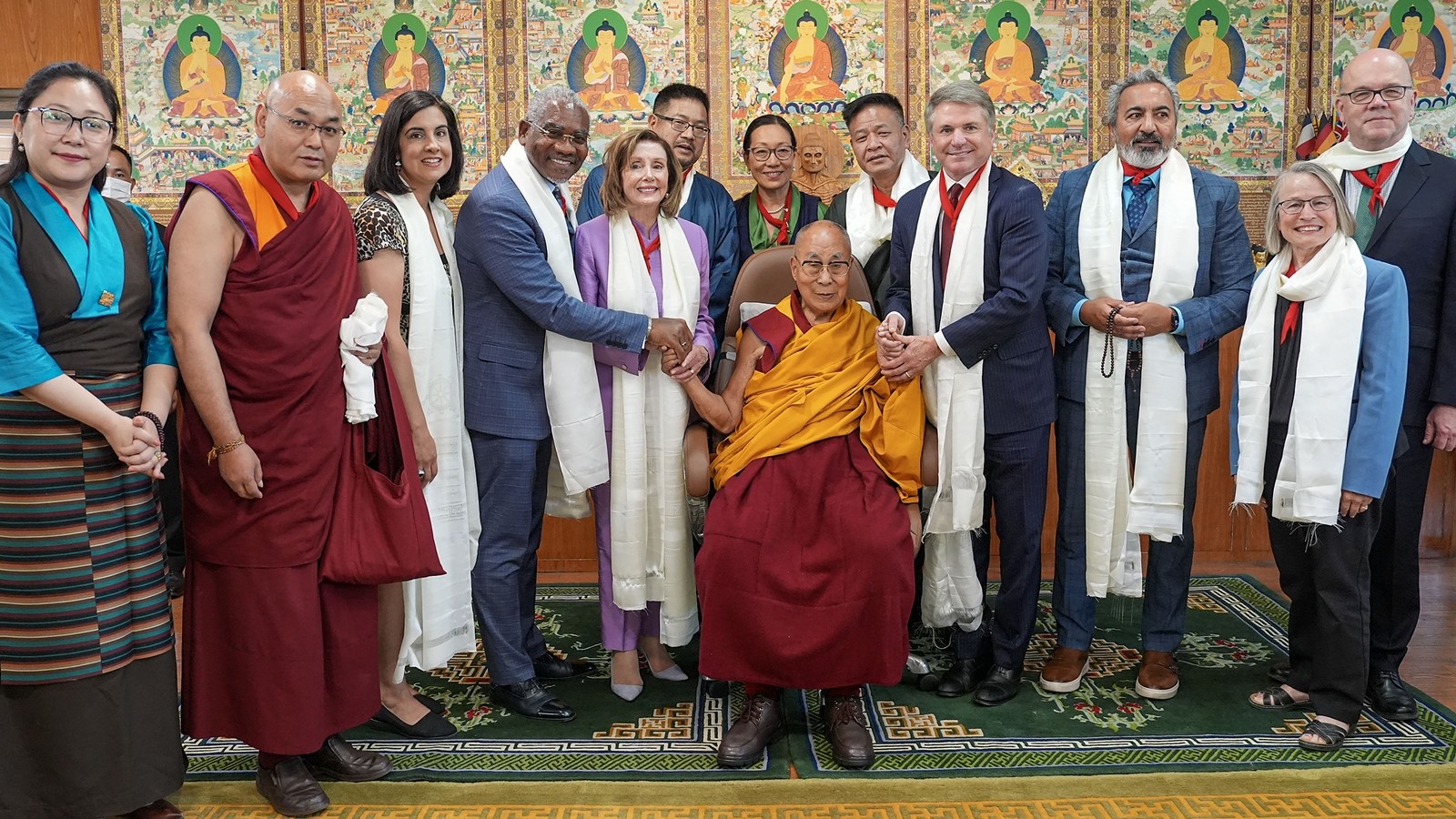
Another recent example of this “out of touch with the facts” strategy, is the new PR statement promoted by Dharamsala that the 14th Dalai Lama is now the “universal leader of Buddhism.” after a few people on a committee of a small Asian Buddhist conference apparently bestowed this lofty title on him. Yet the reality could not be more opposite. During my travels around Southeast Asia, I very rarely saw or heard anyone speak about the 14th Dalai Lama as their teacher or spiritual leader, never mind as the leader of Buddhism. In any case, neither the conference organizers nor the Dharamsala exile authorities have the wide and necessary consensus among Asian Buddhist leaders and nations (India, Nepal, Bhutan, China, Japan and SE Asia) to publicly claim he is their “universal Buddhist leader.”
Yet, even the 12th Tai Situpa Rinpoche, some Karma Kagyu monasteries in exile, and the 17th Karmapa’s sister, Chimey Pelzom, have all “parroted” this unofficial and unauthorized claim of the 14th Dalai Lama’s being the “universal leader of Buddhist traditions” on their social media pages and websites. So, it seems to be yet another effort driven by the Gelugpas to maintain the public image of the conflation of the Dalai Lama with Tibetan Buddhism, and indeed Buddhism itself.
Finally, there was the recent “highly inappropriate” incident of the Dalai Lama asking the Indian boy to “suck his tongue” and kiss his mouth, which caused international outrage and in India, his host nation. Whatever the reasons or motivation, children’s rights advocates in India publicly stated there were “no excuses” for it, cultural norm or not. Those familiar with Tibetan culture and history also noted how it revealed a sinister (and not so widely known) aspect of Gelugpa and Tibetan monastic culture: that of the Dob-Dobs, who would kidnap and rape boys and teenage monks. This was said to be prevalent in Lhasa and the big three Gelug monasteries, as infamously documented in Tashi Tsering’s autobiography, Struggle for a Modern Tibet.
The actual reality of the China-Tibet situation and the 14th Dalai Lama/Gelugpas
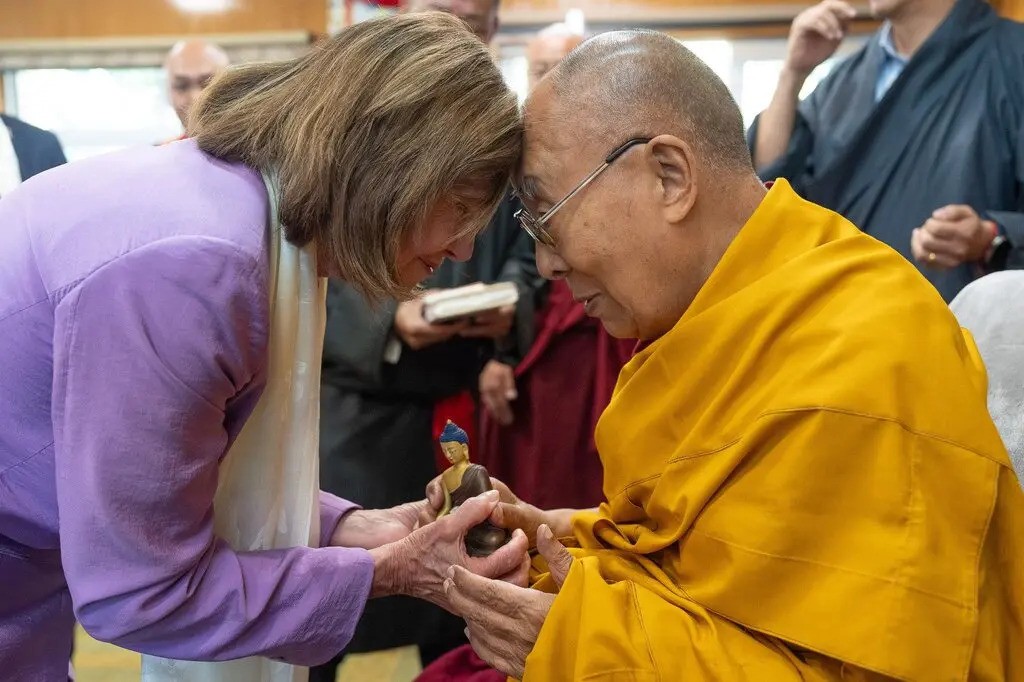
Regardless of the media statements coming out of Dharamsala and the US-funded Tibet organisations, the actual reality of China’s position on the 14th Dalai Lama, remains resolutely the same, with no signs of change or even seeking dialogue with him. The Chinese position has in fact turned even more hardline in the face of Indian and American geopolitics.
For example, in 2022, the US-funded International Campaign for Tibet reported that the Chinese government again affirmed with clear, practical actions their wish to completely exclude the “Dalai Lama and his clique,” and their stance when it comes to US interference. Also, as Raymond Lam reported recently in BDG, the Chinese leader’s visit to a Tibetan Buddhist monastery expressed his “no-change” stance on Tibet and the interference of US politicians in Dharamsala quite clearly. Yet, the Chinese are not taking similar actions or statements against the 17th Karmapa, Karma Kagyu, and other main Tibetan Buddhist teachers, who freely visit and travel to Tibetan areas.
Yet, this year, the Tibetan exile administration (CTA) carry on with their failed policy, even bizarrely stating they are having “back-channel talks” with China. And the 14th Dalai Lama himself publicly claimed that China “want to speak to him”. In fact, some might say that their use of US politicians, such as Nancy Pelosi, and movie stars, such as Richard Gere rather than help their aims at returning to Tibet with power fully intact, has actually hindered and blocked it.
US politician Nancy Pelosi recently met with the 14th Dalai Lama again in Dharamsala in June 2024 and made a very undiplomatic, unBuddhist statement that the Dalai Lama’s legacy would be remembered forever and that Xi Jinping will “be gone and nobody will give you credit for anything.” Pelosi later acknowledged that her remark was bound to be offensive to the Chinese.
This “orientalist,” simplistic oblivion to the fact that Tibet and Tibetan Buddhism is not equivalent to, or defined by the Dalai Lama was noticeable, as was her failure to understand or engage with the nuances, complexity, history, different languages, cultures, and so on of Tibet, China and India. Why does Pelosi only mention the Dalai Lama’s legacy and not that also of great Tibetan Buddhist masters pre- and post-17th Century? And why is the 14th Dalai Lama and the Gelugpa biased CTA still meeting with Pelosi and using her as their undiplomatic, aggressive messenger?
To more objective observers, the US is not only hindering any real progress, but using the cause for Tibetan autonomy for its own political leverage over China. In fact, if you asked most US politicians who support the “Tibetan cause,” very few would probably know (or even care) how the Dalai Lamas got their name and power and dictatorial power there.
If not them, then who?
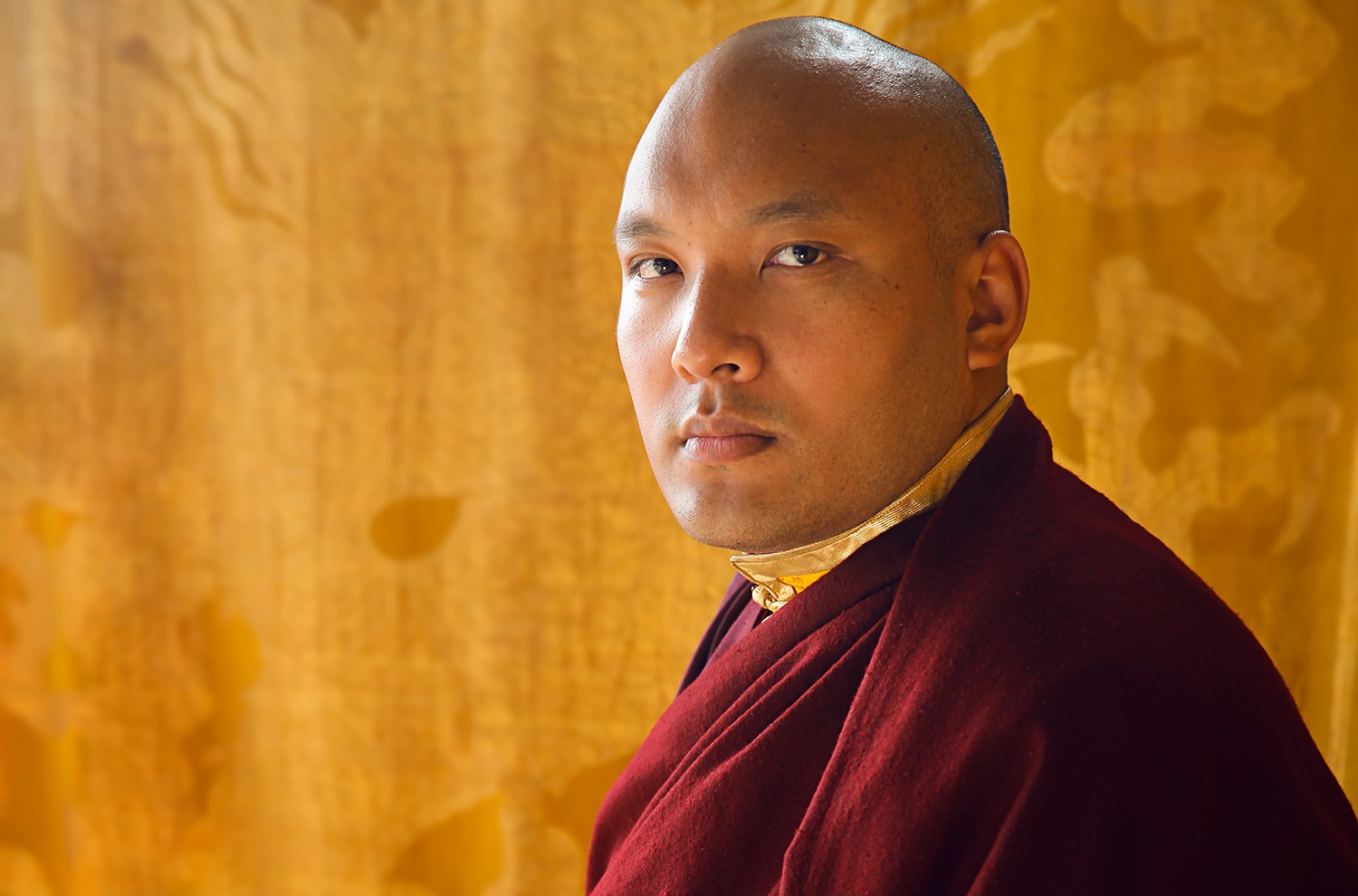
If the Chinese government are open and willing to speak to anyone about Tibet, it is not the 14th Dalai Lama or his representatives, but more to someone like the 17th Karmapa, head of the 900-year-old Karma Kagyu lineage, who is a fluent Mandarin speaker. The Karma Kagyu tradition has a major historical and contemporary presence not only in Tibet but in China. He is also the first Tibetan lineage head to be recognized by the CCP in Tibet when he was enthroned at Tsurphu Monastery. His photos were widespread in Yunnan, China and I was told the Chinese would happily welcome him back there. Historically, though the Karmapas, including the 10th Karmapa, have avoided becoming embroiled in politics, and for good reason.
Yet, despite this potential bridge between the Chinese and Tibetans, the Gelugpas desperately hold onto their dreams of power and domination and returning to the huge castle they built, Potala Palace, which is the logical conclusion of what unofficial US policy is agitating for. Whether due to historical ignorance or geopolitical cynicism, it has not been acknowledged that this outcome is politically and legally impossible for China as Gelug rule over Tibet was itself a 17th century Mongol imposition.
This month, the Gelug-biased Dharamsala administration and Tibet House organized two huge pop-concert style “long-life” events for the 14th Dalai Lama in the USA and Europe, where thousands of Tibetans (and well-meaning Westerners) turned up to see him.
This was followed by the “surprise” public appearance of the 17th Gyalwang Karmapa, Ogyen Trinley Dorje, pictured with the Dalai Lama on his knees next to him at a five-star hotel in Switzerland. Yet the 17th Karmapa has been unable to visit Rumtek Monastery or Sikkim for over twenty years, and is still unable to travel back to India, or other Asian countries since 2017. In fact, the 17th Karmapa organized a one-month long teaching online, which he suddenly postponed after two weeks of teaching citing “another program.” Could this be the program he was forced to do that for?
It was also noticeable that the photos showed the 17th Karmapa, head of a 900 year old main Tibetan Buddhist lineage on his knees in the photo, while the 14th Dalai Lama (from the younger in years Gelug tradition) was seated above him. Yet, in year 2000, when the young 17th Karmapa risked his life to leave Tibet, he is pictured standing on equal footing with him (as it should be). In addition, even the elected Tibetan exile leader, Penpa Tsering was pictured standing next to the Dalai Lama recently, not on his knees (see photos below).

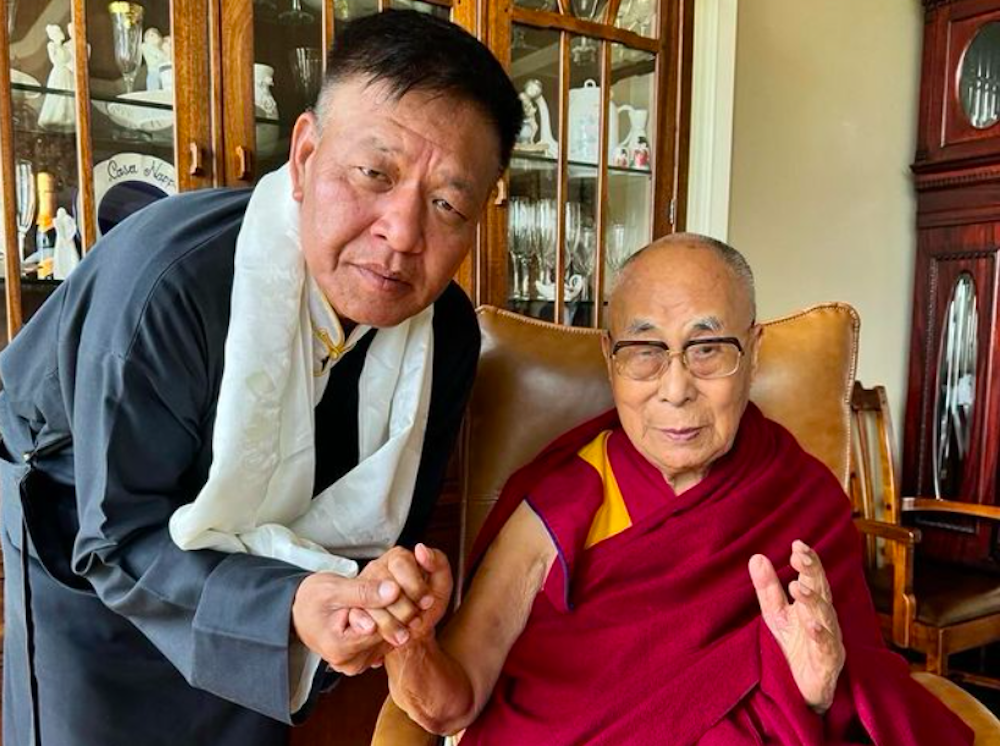
Even more puzzling, two major Karma Kagyu teachers, Khenchen Thrangu Rinpoche (who was a tutor of the 17th Karmapa) and Khenpo Tsultrim Rinpoche passed away and were cremated recently in Nepal. Why was the 17th Karmapa not seen publicly attending those important Karma Kagyu events instead?
It is clear the Gelugpas are intent on maintaining their spiritual (if not political) supremacy over Kagyu and all the other Tibetan Buddhist lineages in exile.
Political stalemate
How much longer can this failed sectarian and divisive policy and strategy continue? The prospect of China choosing the next 15th Dalai Lama is increasingly likely. All the ensuing conflict and division that such a move will cause for Tibetans in exile and Tibet, as well as the Indian and Chinese governments, should give the 14th Dalai Lama something to reflect on as to what would be the best, most peaceful and compassionate thing to do for all concerned.
When the great student of Buddha, Ānanda, faced warring factions fighting over his remains, he went to the middle of a river to pass away and split his body in two, so nobody could possess him, and conflict could be averted. If the 14th Dalai Lama considered all “sides” in terms of what is best for harmony in the region, and announced that he would be the last incarnation, it would not only put an end to current and future conflict about the Dalai Lamas, but also lead to an opening for harmonious and friendly relations to be restored between India and China and talks with Tibetans themselves.
What is the alternative? Another hundred years of political stalemate, with two Dalai Lamas and no real “winners?” Or a new approach, of voices and institutions that seek to promote harmony, friendship, trust and respect between India, China and Tibet as opposed to continuing division as to who is for or against the Dalai Lama?
Controversial as this may sound to some, perhaps now more than ever is the time for the 14th Dalai Lama to show the world what a compassionate and wise Buddhist leader he is, by putting an end to all the constant long-life ceremonies, and bowing gracefully out of the whole situation, removing the Mongolian-Gelug shadow over Tibet and Tibetans, once and for all.
See more
THE STRUGGLE FOR A MODERN TIBET: Anniversary of Tibetan Democracy Day (Mangtso Duchen) and the ideals of a liberal, ‘free speech’, secular democracy (Dakini Translations)
‘China Wants To Contact Me’: Dalai Lama’s Big Statement, Says ‘We’re Not Seeking Independence’ (TIMES NOW)
BUDDHIST ASSOCIATION OF CHINA TAKES A LEADING ROLE IN CHINA’S ATTEMPTS TO CONTROL AND FORCIBLY RESHAPE TIBETAN BUDDHISM (International Campaign for Tibet)
SEEKING THE 17TH KARMAPA: 17th Karmapa’s recent ‘private’ meeting with Tsewang Rinpoche, the ‘quiet’ relics gift in Malaysia, and an exploration of reasons for the Karmapa’s ongoing public ‘disappearance’ (Dakini Translations)
Related blog posts from BDG
Public petition launched to support the 17th Karmapa’s visit to Sikkim
President Xi’s visit to Hongjue Temple was for American and Gelug eyes
His Holiness the 14th Dalai Lama: No one is sucking anyone’s tongue


